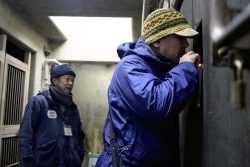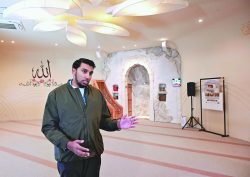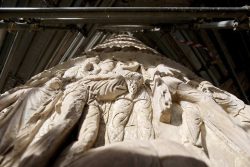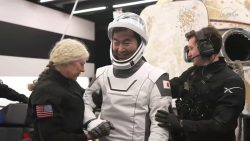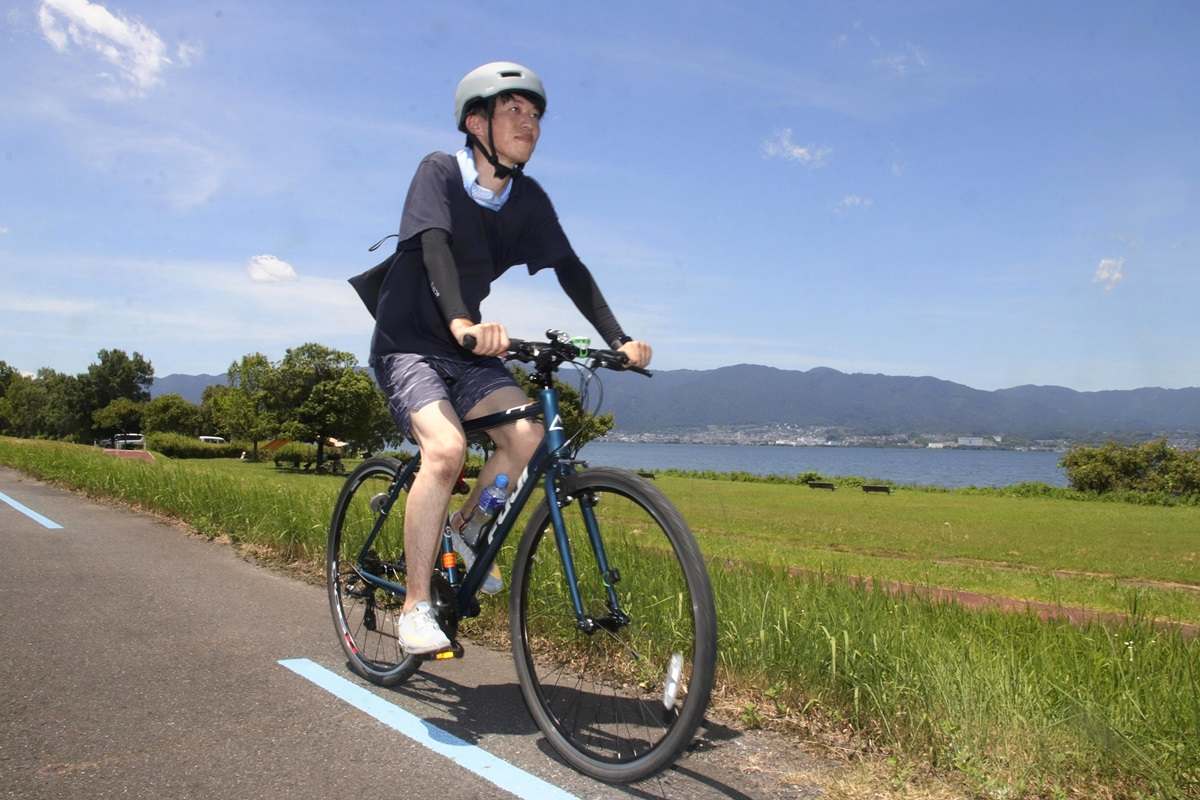
The writer rides on a section of the Biwaichi route.
12:54 JST, September 7, 2024
OTSU — Cycling around Lake Biwa has become such a popular outdoor activity in Shiga Prefecture that enthusiasts have given making the 200-kilometer circuit around the nation’s largest lake its own name — “the Biwaichi.”
The route for the Biwaichi — derived from Biwa and “isshu,” meaning one lap — was designated in 2019 by the Land, Infrastructure, Transport and Tourism Ministry as the first national cycling route. In 2023, 128,000 cyclists rode the Biwaichi, the most ever on any route, according to a prefectural government tally.
This summer, I decided to take on the Biwaichi and visited the experts on the subject, the staff at Cycle Station Biwaichi in Otsu, for advice.
My original plan was to complete the ride in one day. However, Cycle Station manager Masahiro Morita talked me out of it. “For a beginner, completing the Biwaichi in one day is not leisure, it’s an ascetic test of discipline.”
To make it around Lake Biwa in a single day necessitates starting out around 5 a.m. and pedaling at a constant 18 kph until sunset. In other words, it’s impossible for me.
Morita said many people start out with partial rides, such as cycling around the smaller southern portion of the lake, which is bisected by the Biwako Ohashi bridge. The Biwaichi website introduces a number of half-day routes, as well as plans for multi-day rides over the full route.
In the end, upon Morita’s recommendation, I decide to do the 50-kilometer round trip from Otsu to Moriyama.

I rent a cross bike from Cycle Station that has thick tires and provides a stable ride, which I think suits me best. Other types of bikes are available, such as the lighter, faster road bikes and electricity-assisted e-bikes for those lacking confidence in their leg endurance.
I wear cycling shorts for easy range of motion and athletic shoes that I am comfortable with. I sport a helmet, and wrap a towel around my neck and use arm covers to prevent sunburn. With two bottles of water, I am ready to go.
I set out at 10 a.m. from the starting point at Otsu Port at a leisurely pace. As a designated national route, the cycling path is indicated by blue arrows, lines and signs, or completely separate from the road, ensuring safer cycling.
That said, there are sections where the traffic is heavy or the route is cut off, depending on the route, making it a bit scary. Those who get lost are advised to stop and confirm their location using the cycling app Biwaichi Cycling Navi. The app also shows tourist spots, bicycle parking lots and other useful information. I recommend using it.
Road traffic rules naturally must be observed, including cycling on the left side while on the road. Pedestrians have the right of way. Stopping short increases the chances of falling over, so watch your speed.
Forty-five minutes into the ride, I’m already feeling the heat. The sweat pours from my brow. “Don’t overdo it,” I tell myself. It’s a little soon, but I take a break at Aeon Mall Kusatsu, about 10 kilometers from the start.
Located at the mall is one of 359 cycling support stations spread across Shiga Prefecture and certified by the prefectural government. There, tires can be pumped up or repairs made.
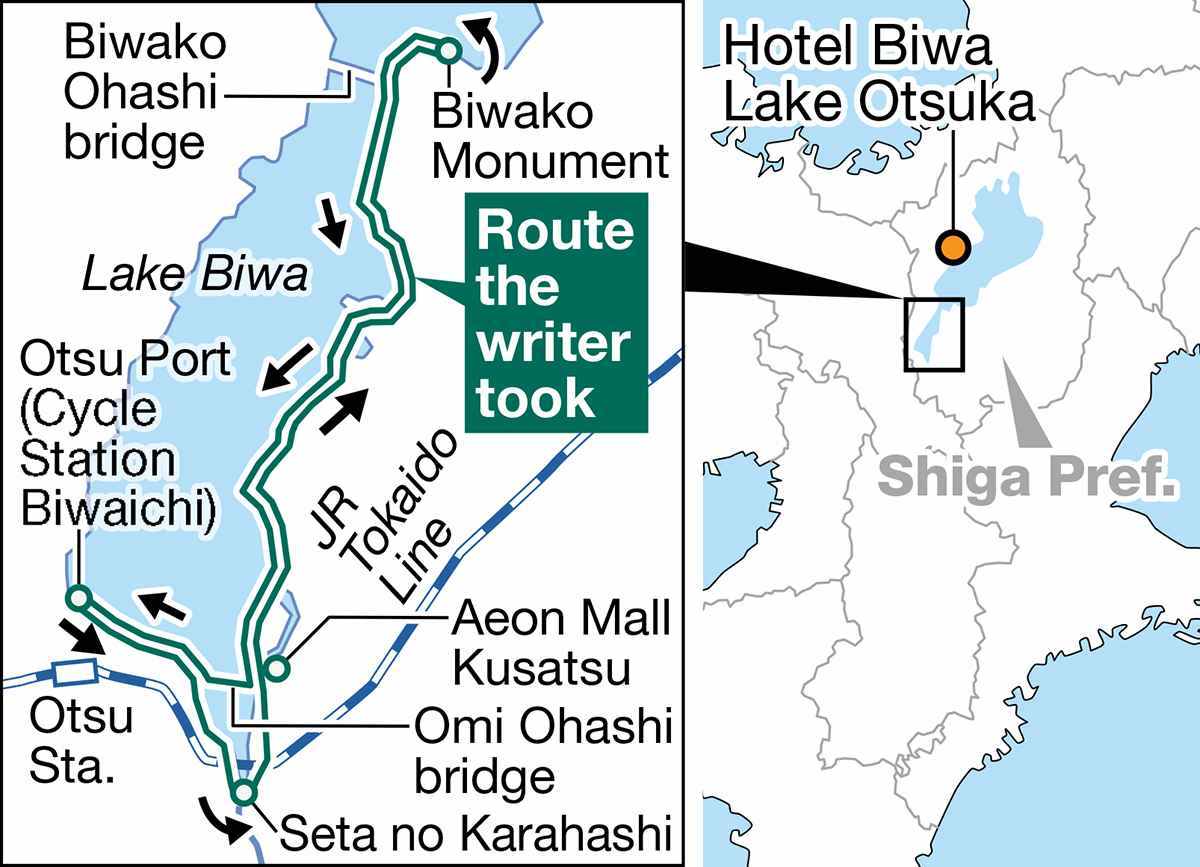
Having caught my breath, I resume the journey. My next target is No. 2 Nagisa Park on the lakefront of Moriyama, about 18 kilometers away. This stretch has uphill sections, and is tougher than I expected.
I notice that my thighs are a bright red. I forgot to protect my legs from the sun. As I curse myself for not having worn leggings, I continue pedaling and finally arrive at the park, three hours after I started.
A beautiful lakeside scene and blue sky spreads out before my eyes, wiping away my fatigue. “This is the reason for the Biwaichi’s popularity,” I think to myself. Flush with a pleasant sense of accomplishment, I take a photo in front of the monument reading “BIWAKO” in the park.
Having enjoyed the view of the vast Lake Biwa from the Biwako Ohashi bridge, I retrace the route back to Otsu Port, where I arrive at 4 p.m. The total trip took about six hours. It was far shorter than the full circuit around the lake, but the experience was enough to get a feel for the charm of the Biwaichi.
“I want the Biwaichi to help spread the joy of cycling,” Morita said.
Next time, I may take on the northern portion of the lake, maybe in the fall when the weather is nicer. That will complete the Biwaichi for me — I’m already excited.
Accommodating cyclists
Along the Biwaichi, there are 58 lodging facilities designated by the prefectural government as cyclist-friendly. In a program started in 2022, the facilities have to meet such criteria as allowing guests to bring their bikes into the rooms.
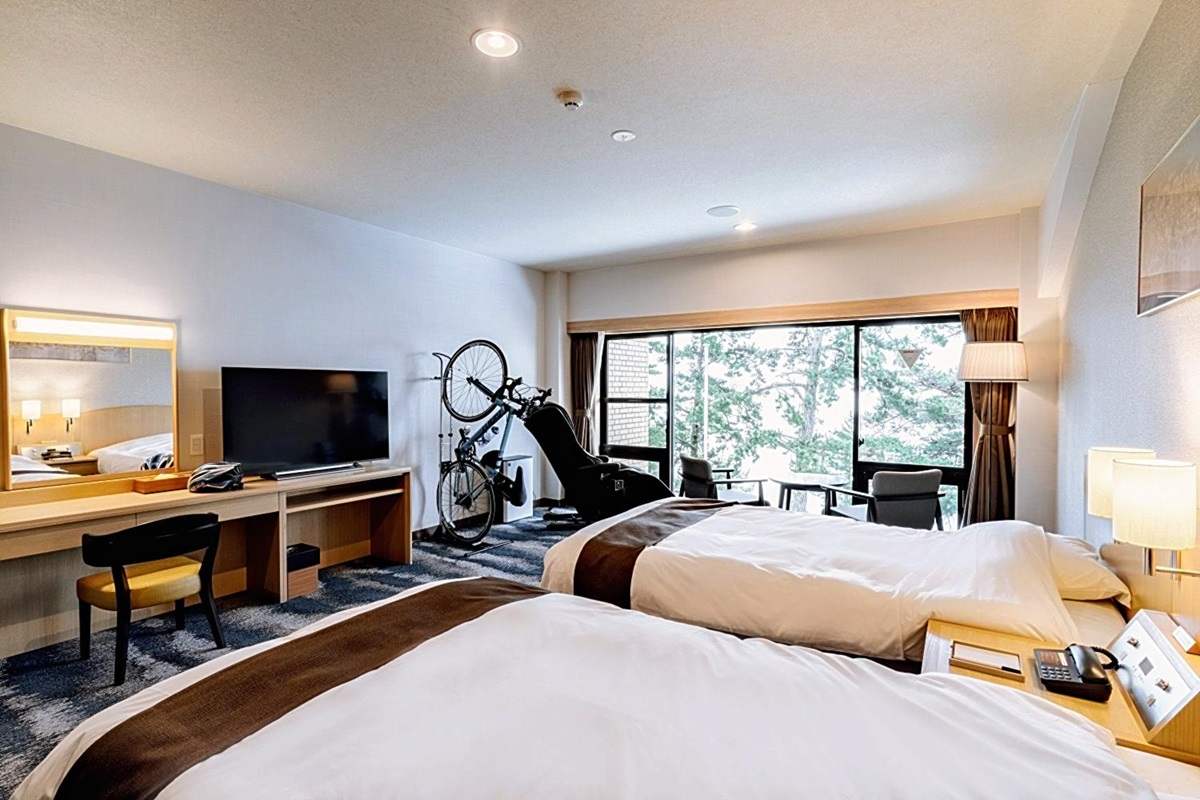
Hotel Biwa Lake Otsuka offers rooms in which cyclists can bring their bikes.
Rooms at Hotel Biwa Lake Otsuka start at ¥10,450 per night without meals, with some equipped with massage chairs to relieve fatigue muscles.
“We provide hospitality from the viewpoint of the cyclists,” hotel manager Akihiro Yamagiwa said.
There is also a youth hostel for budget travelers in the ¥4,000 range, as well as inns with hot spring baths.
Related Tags
"Features" POPULAR ARTICLE
-

Students Recreate 19th-Century Bento Boxes Made for Ino Tadataka’s Survey Team in Hot Spring Town on Nakasendo Road
-

Santa Claus Delivers Christmas Presents to Penguins at Aquarium in Japan’s Nagasaki Prefecture
-
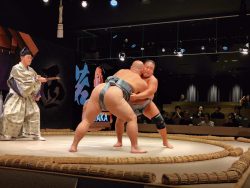
Sumo Restaurant in Tokyo Teaches Foreign Visitors About the Ancient Sport, with Bouts Between Retired Rikishi
-
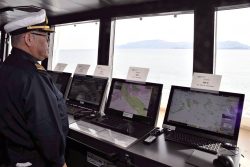
Autonomous Passenger Ship Connects Mainland with Remote Island in Seto Inland Sea; World’s 1st Commercially Operated Autonomous Vessel
-

Japanese Chef of Italian Restaurant in Tokyo Offers Milanese Risotto; Bright Colors, Rich Flavors in Simple Steps
JN ACCESS RANKING
-

Japan Govt Adopts Measures to Curb Mega Solar Power Plant Projects Amid Environmental Concerns
-

Core Inflation in Tokyo Slows in December but Stays above BOJ Target
-

Major Japan Firms’ Average Winter Bonus Tops ¥1 Mil.
-

Bank of Japan Considered U.S. Tariffs, Coming Shunto Wage Hike Talks in Its Decision to Raise Interest Rates
-

Tokyo Zoo Wolf Believed to Have Used Vegetation Growing on Wall to Climb, Escape; Animal Living Happily after Recapture




